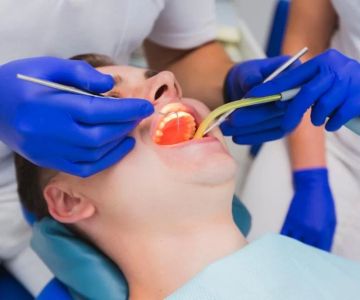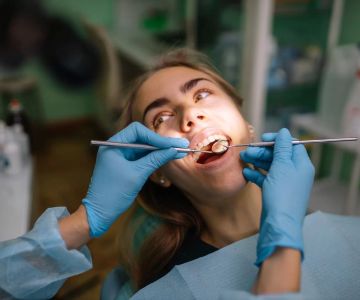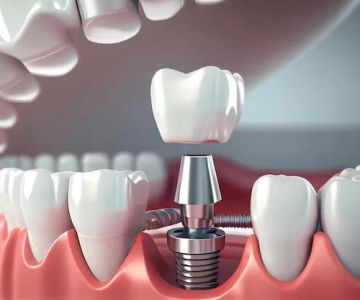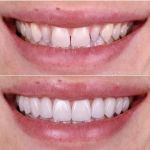The Success Rate of Orthodontic Treatments: Key Factors and What You Should Know
- 1. Understanding Orthodontic Treatments
- 2. Factors Affecting the Success Rate of Orthodontic Treatments
- 3. Braces vs. Other Orthodontic Treatments
- 4. Tips to Improve Your Success Rate
- 5. Real-Life Examples of Successful Orthodontic Treatments
- 6. Expert Advice and Final Thoughts
1. Understanding Orthodontic Treatments
Orthodontic treatments are designed to correct irregularities in teeth and jaws, offering a more aesthetic smile and improved dental function. From traditional braces to more modern alternatives like clear aligners, orthodontics help address a range of issues such as overcrowding, gaps, and bite problems. But what is the success rate of these treatments, and how can patients maximize their outcomes?
2. Factors Affecting the Success Rate of Orthodontic Treatments
The success rate of orthodontic treatments can vary based on several factors, including:
- Age: Younger patients often experience quicker adjustments due to their still-developing bone structure.
- Compliance: Patients who follow the treatment plan, including wearing retainers and attending scheduled appointments, typically see better results.
- Type of Treatment: Different orthodontic options, such as traditional braces or Invisalign, may offer varying success rates depending on the severity of the dental issues.
- Orthodontic Experience: The skill and experience of the orthodontist play a significant role in determining the effectiveness of the treatment.
3. Braces vs. Other Orthodontic Treatments
When comparing traditional braces with other orthodontic treatments, such as clear aligners, it's important to understand how the success rate can differ. Braces are often considered the most effective for complex cases, especially for patients with severe crowding or bite issues. On the other hand, clear aligners offer a more discreet option, although they may not be suitable for all types of dental misalignments.
4. Tips to Improve Your Success Rate
To increase the likelihood of a successful orthodontic treatment, follow these tips:
- Follow Instructions: Adhere to your orthodontist’s instructions regarding wearing your braces or aligners, attending follow-up visits, and using any additional appliances like rubber bands.
- Maintain Good Oral Hygiene: Proper brushing and flossing help prevent complications like tooth decay or gum disease, which can interfere with orthodontic progress.
- Be Patient: Orthodontic treatments take time. It’s crucial to stay patient and committed to the process for the best results.
5. Real-Life Examples of Successful Orthodontic Treatments
Take Sarah, for instance, who underwent two years of traditional braces treatment to correct her overcrowded teeth. Despite her initial doubts, the outcome was stunning, and her confidence skyrocketed once her treatment was completed. Or consider Jake, who opted for Invisalign for a less noticeable solution to his minor bite problem. In both cases, patient compliance and expert care played a crucial role in their success.
6. Expert Advice and Final Thoughts
According to Dr. Jane Smith, a leading orthodontist at Dentistry Toothtruth, "The success of orthodontic treatment depends largely on patient commitment and the complexity of the case. It’s important to discuss all treatment options with your orthodontist to choose the best path forward." For more personalized advice on your orthodontic journey, visit Dentistry Toothtruth.
If you're looking for more information or need help choosing the right orthodontic treatment for you, don't hesitate to visit Dentistry Toothtruth to explore your options and find a treatment plan that works for you.







 Amara Dental of Cherry Hill4.0 (311 review)
Amara Dental of Cherry Hill4.0 (311 review) Leonard I Nunnally III DDS4.0 (107 review)
Leonard I Nunnally III DDS4.0 (107 review) Lake Minnetonka Orthodontics4.0 (40 review)
Lake Minnetonka Orthodontics4.0 (40 review) Dr. Yung T. Lang, DDS4.0 (6 review)
Dr. Yung T. Lang, DDS4.0 (6 review) Lourdes's Dentistry - Affordable Dentist4.0 (160 review)
Lourdes's Dentistry - Affordable Dentist4.0 (160 review) Fletcher Heights Dental Care, PC4.0 (55 review)
Fletcher Heights Dental Care, PC4.0 (55 review) The Importance of Oral Health Education During Pregnancy for a Healthy Pregnancy
The Importance of Oral Health Education During Pregnancy for a Healthy Pregnancy Best Tips for Brushing Your Teeth Properly for Healthy Gums: Essential Techniques for Oral Health
Best Tips for Brushing Your Teeth Properly for Healthy Gums: Essential Techniques for Oral Health Why Skipping Dental Checkups Can Lead to Bigger Oral Health Problems
Why Skipping Dental Checkups Can Lead to Bigger Oral Health Problems Advantages of Porcelain Dental Restorations
Advantages of Porcelain Dental Restorations How Can Diabetes Cause Tooth and Gum Problems? Preventing and Managing Oral Health Issues
How Can Diabetes Cause Tooth and Gum Problems? Preventing and Managing Oral Health Issues Healthy Habits for Promoting Good Oral Health and Hygiene: Tips for a Healthy Smile
Healthy Habits for Promoting Good Oral Health and Hygiene: Tips for a Healthy Smile